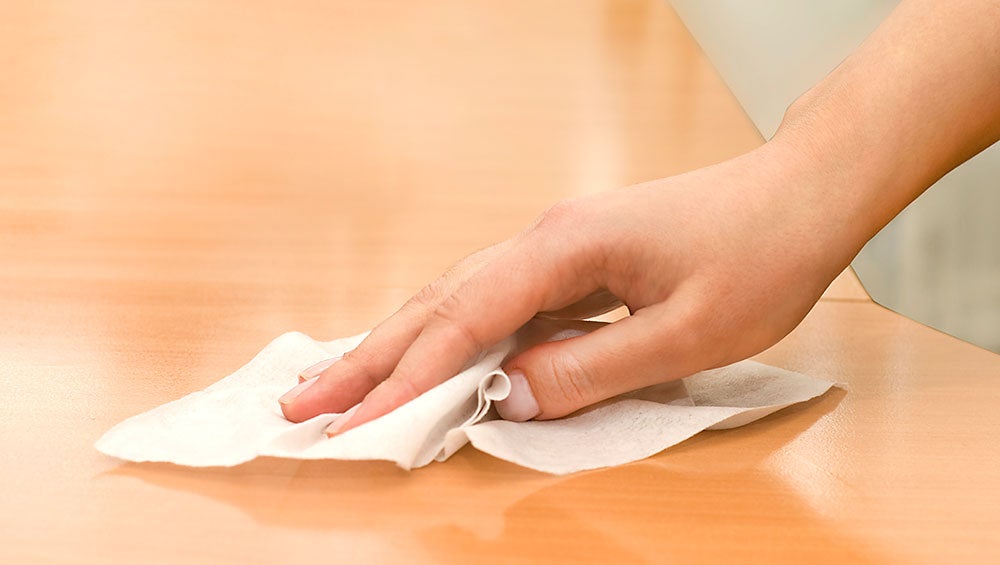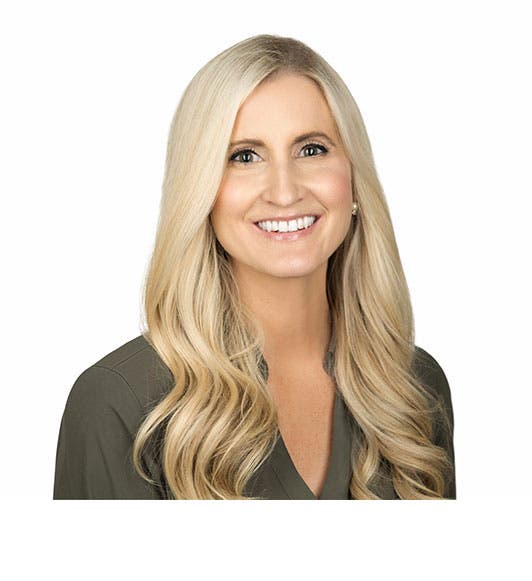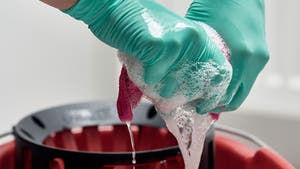
Within the past three months, there have been more and more articles written about “Sanitization or Hygiene Theater.”1 The concept is based off “Security Theater,” a term which was used post-9/11 to describe the increased TSA measures that, arguably, did little to prevent future attacks.2 The comparison is founded on the notion that all the pandemic-induced cleaning, sanitizing, and disinfecting may be completely unwarranted and even wasteful in terms of time and money. In August 2020, Dr. Emanuel Goldman, a Professor of Microbiology at Rutgers University published a commentary based on comprehensive scientific literature review in The Lancet stating that “the chance of [SARS-CoV-2] transmission through inanimate surfaces is very small, and only in instances where an infected person coughs or sneezes on the surface, and someone else touches that surface soon after the cough or sneeze (within 1–2 h) [is there a risk].” Dr. Goldman goes on to say that “although periodically disinfecting surfaces and use of gloves are reasonable precautions especially in hospitals, I believe that fomites that have not been in contact with an infected carrier for many hours do not pose a measurable risk of transmission in non-hospital settings.”3
As a Public Health Professional, I cannot help but pause to contemplate this perspective. On one hand, the CDC confirms that “COVID-19 is thought to spread mainly through close contact from person-to-person, including between people who are physically near each other (within about 6 feet).” Though guidance still encourages “routinely clean[ing] and disinfect[ing] frequently touched surfaces.”4 On the other hand, I have been advocating for better disinfection practices in both healthcare and private settings for my entire career. I see this new world mindset as an incredible public health achievement. Infection Prevention is no longer a term isolated to the four walls of the hospital — we, now more than ever, are all more aware of the need for disinfection within our businesses as employees (or owners), as consumers, and even in our own homes. If you were to travel back to pre-pandemic times (possible via a quick Google search), illnesses such as the flu, common colds, and stomach bugs (gastroenteritis) were already a substantial burden in terms of absenteeism, diminished productivity, and increased healthcare costs.5 Influenza infections in adults alone resulted in an estimated $87 billion per year in terms of healthcare costs, projected lost earnings, and loss of life.6
Even knowing all of this, prior to the pandemic, employees and customers accepted a certain level of risk when it came to the safety of our shared public spaces. Post-pandemic, that accepted trust in the world around us is gone. Deloitte recently published a Safety and Cleanliness Survey7 which demonstrated that in addition to wearing masks and providing hand sanitizer, the top interventions businesses can take to rebuild trust are:
For Customers:
- Surfaces cleaned after each interaction (62%)
- Extra cleaning precautions & preventions taken (59%)
- Regular spraying/fogging to disinfect shared furniture spaces (57%)
For Employees:
- Regular cleaning of equipment and shared space by a cleaning service (64%)
- Regular spraying/fogging to disinfect shared furniture spaces (60%)
Source: Deloitte Safety & Cleanliness Survey, Deloitte Consulting LLP, 2020
Not only are these practices what we should have been doing all along, it is evident that the public is now looking for consistent displays of safety and cleanliness to trust businesses moving forward. However, as highlighted in the recent CloroxPro blog, Smart Disinfection: Making the Most of Your Disinfectants, it is important to develop a plan for using disinfectants efficiently and effectively. There is undoubtedly a balance that businesses need to find, and “hygiene theater” cannot be the only public health protocol put into practice. Any cleaning and disinfection efforts need to be used in combination with other CDC recommended initiatives, including social distancing, mask wearing, handwashing, staying home when sick, and improving indoor ventilation.4 The idea of Dr. James Reason’s 1990 “Swiss Cheese Model” still holds true today. The safeguards recommended represent the multiple layers needed to protect consumers and employees, alike. As pointed out by the Cleveland Clinic, “when used together consistently, the holes (or weaknesses) in any single layer of protection should be offset by the strengths of another layer of intervention.”8 We have to address every area of potential spread to truly create a safe and healthy environment for all.
For the latest information on COVID-19 and variants, visit our CloroxPro COVID-19 Hub.
References
- 1. Thompson D. Hygiene Theater Is a Huge Waste of Time: People are power scrubbing their way to a false sense of security. [Internet]. The Atlantic. 2020 [cited 2020 Oct 6]. p. 1–8. Available from: https://www.theatlantic.com/ideas/archive/2020/07/scourge-hygiene-theater/614599/
- 2. Judkis M. Deep cleans and disinfecting mists might not keep us from getting the virus , but they sure make us feel better [Internet]. The Washington Post. 2020 [cited 2020 Oct 6]. Available from: https://www.washingtonpost.com/lifestyle/style/deep-cleans-and-disinfecting-mists-might-not-keep-us-from-getting-the-virus-but-they-sure-make-us-feel-better/2020/09/05/f428b8ee-e965-11ea-97e0-94d2e46e759b_story.html
- 3. Goldman E. Exaggerated risk of transmission of COVID-19 by fomites [Internet]. Vol. 20, The Lancet Infectious Diseases. 2020. p. 892–3. Available from: https://www.thelancet.com/journals/laninf/article/PIIS1473-3099(20)30561-2/fulltext
- How COVID-19 Spreads [Internet]. Centers for Disease Control and Prevention (CDC). 2020 [cited 2020 Oct 6]. Available from: https://www.cdc.gov/coronavirus/2019-ncov/prevent-getting-sick/how-covid-spreads.html
- 4. Bramley TJ, Lerner D, Sames M. Productivity losses related to the common cold. J Occup Environ Med. 2002.
- 5. Keech M, Beardsworth P. The impact of influenza on working days lost: A review of the literature. PharmacoEconomics. 2008.
- 6. Safety and cleanliness – make it or break it. [Internet]. Deloitte Consulting, LLP. 2020 [cited 2020 Oct 6]. p. 1–5. Available from: https://www.deloittedigital.com/content/dam/deloittedigital/us/documents/offerings/offering-20200626-safety-cleanliness-covid.pdf
- 7. Return to Work Amid COVID-19 [Internet]. Cleveland Clinic. 2020 [cited 2020 Oct 9]. p. 5. Available from: https://my.clevelandclinic.org/-/scassets/files/org/employer-solutions/covid-19-returning-to-work-guide.ashx


